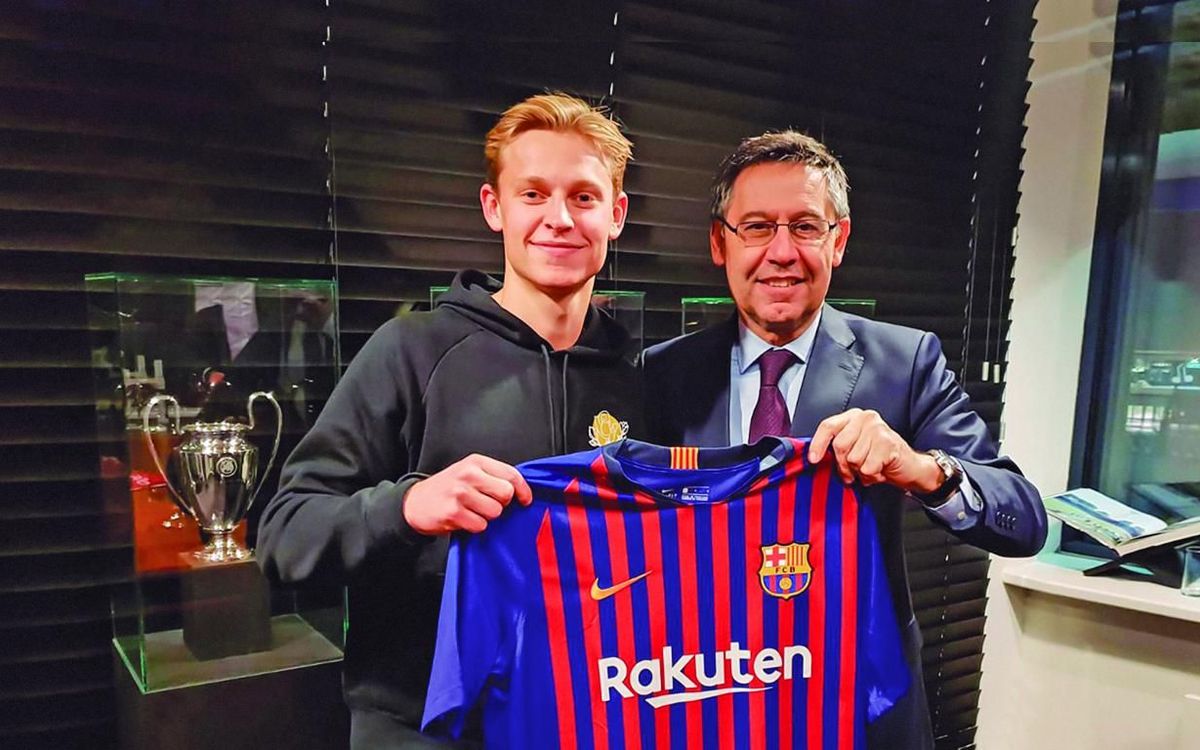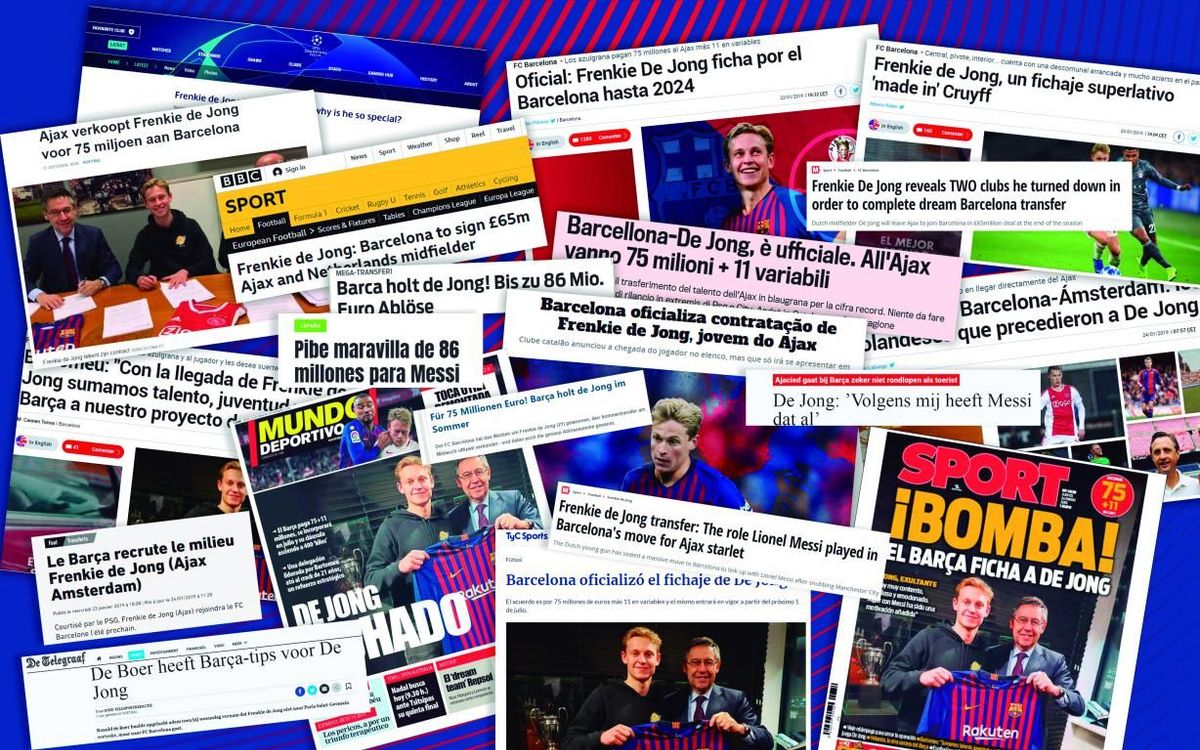Frenkie De Jong: A name for the future
- Viber
- Messenger
- Copy link
Frenkie de Jong is one of those players that gets noticed immediately. His plays a lively breed of football, as if he doesn’t even need to think about what he is doing. Perhaps that’s why he’s so entrancing – because he’s not just defending his team shirt, he is enjoying the game too.
Concepts and positional diversity: the first thing to strike about him is his grasp of the most basic concepts of football. Every time his feet receive the ball, there is purpose to what he is doing, and every pass he makes is designed to make the ball easier to receive. It all comes naturally to him. And he can do this anywhere on the field. Because De Jong can play in many positions and adapts well to them all.
In Barça language, Frenkie could wear number 4, or 6, or 8 or even 10. Although it’s not his ideal position, he’d make an excellence central playmaker. In 25 starts this season, Ten Hag has used him 20 times on the outside of midfield in a 4-3-3 system, three times as the central midfielder and twice at centre back. Ronald Koeman used him as the left-sided of two central midfielders in the games against Germany and France. But the great thing about him is that he can drift between the different positions depending on what the game needs. So De Jong can be used as a first or second line of defence and attack, and such versatility is hard to find in football these days.

Running with the ball
His dribbling is another of his prized assets. Despite his youth, he’s amazing to watch with the ball at his feet. He takes the direct route and is almost impossible to stop over the first few metres, with his use of both feet and ability to put his body between the defender and the ball. From there, he has a natural instinct for finding the right space – he’s an expert at breaking through the opposition’s lines and using the ball to generate superiority.
Body language
He’s exquisite in the way he holds his body. He never turns his back on the game and absolutely always has the best possible view of the action that physics permit. It’s as if he’s adjusting his position to make sure he knows exactly where the ball and every play are at any given time. But when there is no way he can see what he needs to see, he has another of those trademark Barça skills. He looks around before he receives the ball, and not after. That sounds so simple and obvious, but at the fast pace of the modern game, it’s easier said than done. It wins advantages, it gains perspective and it makes decision-making much simpler.
Pass master
There are an uncountable number of different ways that the ball can be passed, but Frenkie de Jong knows them all. And that’s largely because he knows exactly how the different parts of the foot impact the ball. And his stunning pass accuracy rate of 91.8% is right up there with the Barça greats – more than Sergio Busquets on 90%, just short of Ivan Rakitic on 92% and even challenging Arthur and his stunning 94%.
He’s adept at short passes and long balls, with an astounding aim, and he reads the game so well that the risk factor is kept to a minimum.

Dummy runs
His favourite tricks are the dummy-and-run and confusing the opponent by jiggling the ball under his foot. He does so with such confidence that he is happy receiving the ball under pressure, even when tightly marked, and uses his ball skill to get out of any tight spot. And he does it to gain superiority, either when starting plays or in the middle of them.
Hot space
One of Frenkie’s strongest attributes is his ability to keep the play moving. He’s not the kind of man to sit back and see what happens. His average of 82.4 passes ranks him ninth in Europe, and only Toni Kroos and Marco Verratti were more active in this season’s Champions League. In the Dutch league he’s out on his own, with an average of 78.4 passes a game. He never eases off when his side are winning, nor gives up when they’re struggling. Against Feyenoord, he had a staggering 162 touches of the ball – and despite Ajax suffering a big loss when they met a second time, he was still the most active player on the pitch.
He’s also good at finding space on the opposite side of the field to the ball-action. His natural ability to open up the game bring multiple benefits, because he draws defender away from their positions to create better passing lines to the front men.
Things can only get better
He is only 21 years old, so we probably have yet to see him at his very best. At Barça he’ll probably need to be more patient that he was at Ajax, and he’ll also need to operate in a more limited radius to keep the passing tighter, and that will mean he’ll have to fine-tune his decision-making – especially when it comes to solo runs. They’re a great resource when required, but he needs to be careful not to abuse the option, or their impact is minimised. And, of course, FC Barcelona is an even higher level than he is used to, and that will require some adaptation.
But Frenkie de Jong is all about renewed hope. He’s already a great player, and could now go on to become a superstar. Football always appreciates something unpredictable, and this player has all the flair required to provide just that. There’s no question about it, his name is the future.
- Viber
- Messenger
- Copy link

